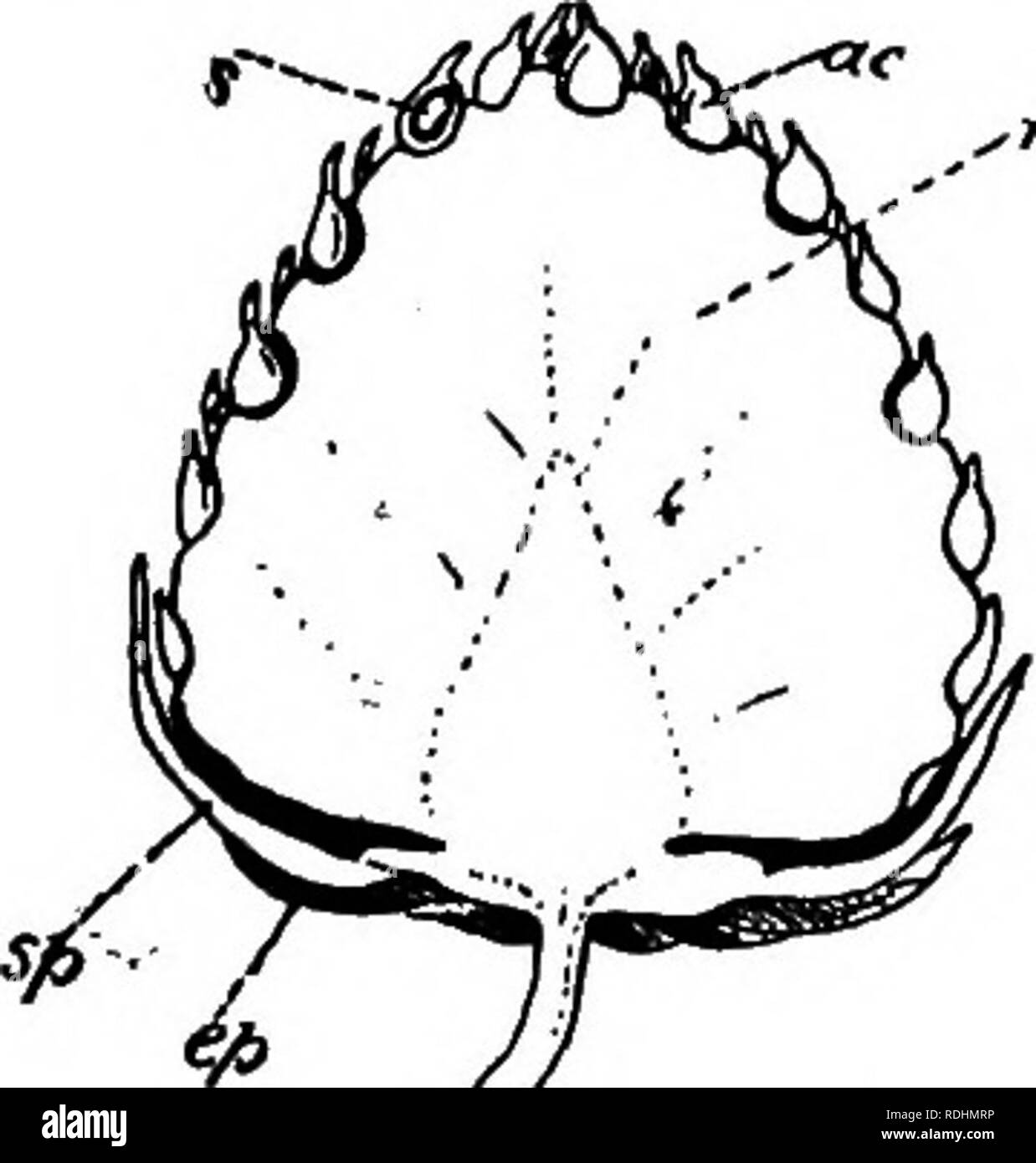. Elementary botany . Botany. POLYPETAL^—ROSACEA 141 the receptacle. Each one-chambered ovary (fig. 169, ov) contains one ovule {o), and is surmounted by a single style {st), which emerges through the mouth of the receptacular tube and bears a simple stigma {sg). Fruit (fig. 170) compound, con- sisting of numerous achenes concealed in the red hollowed receptacle, which bears a persistent calyx. (Each achene is, of course, developed from one of the separate carpels.) Seeds having no endosperm. Dissemination.—The achenes are scattered by the agency of birds, which peck at the red receptacle and

Image details
Contributor:
The Book Worm / Alamy Stock PhotoImage ID:
RDHMRPFile size:
7.2 MB (162.7 KB Compressed download)Releases:
Model - no | Property - noDo I need a release?Dimensions:
1543 x 1620 px | 26.1 x 27.4 cm | 10.3 x 10.8 inches | 150dpiMore information:
This image is a public domain image, which means either that copyright has expired in the image or the copyright holder has waived their copyright. Alamy charges you a fee for access to the high resolution copy of the image.
This image could have imperfections as it’s either historical or reportage.
. Elementary botany . Botany. POLYPETAL^—ROSACEA 141 the receptacle. Each one-chambered ovary (fig. 169, ov) contains one ovule {o), and is surmounted by a single style {st), which emerges through the mouth of the receptacular tube and bears a simple stigma {sg). Fruit (fig. 170) compound, con- sisting of numerous achenes concealed in the red hollowed receptacle, which bears a persistent calyx. (Each achene is, of course, developed from one of the separate carpels.) Seeds having no endosperm. Dissemination.—The achenes are scattered by the agency of birds, which peck at the red receptacle and incidentally dislodge the achenes. The red colour serves to render the fruit easily visible to birds. Type II.: STRAWBERRY (Fragaria vesca). The floral formula is the same as for the Rose, K5 C5 A 00 Goo. Beneath the calyx, and alternating with the sepals, is a whorl of sepal-like members which forms an epicalyx (fig. 82). The epicalyx represents, in this case, the stipules of the sepals, which have joined together in pairs. The shape of the receptacle is curious (compare fig. 173, representing the Blackberry flower), it is like a shallow saucer (re) with a large lump irp) rising from its centre. " The sepals, petals, and stamens are attached to carpfiofStVaw- the rim of the saucer, and are therefore perigynous. the'otSv^cuI Numerous apocarpous carpels are inserted on the down the central outgrowth. The disk {d) is like a ring, '"''^'^''• and lines the space between the rim of the saucer and the place of attachment of the central swelUng; it excretes honey, and is a nectary. Each carpel (fig. 171) has its style {sy) attached to the side of the ovary {ov). The ovary contains one ovule {p). Fruit (fig. 172). — After pollination, the central mass of the receptacle {re) enlarges greatly, becomes first white in colour, and finally changes into the red, sweet, juicy "strawberry" which we eat. Each carpel remains small 172.—Vertical section of and forms a